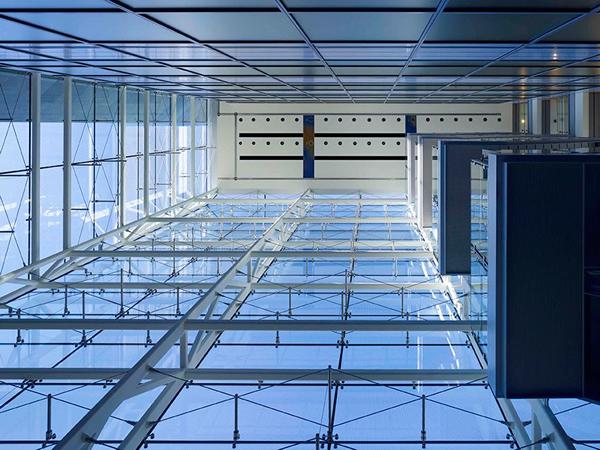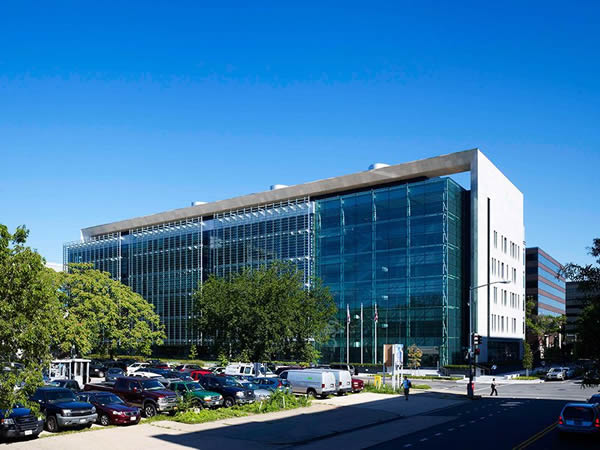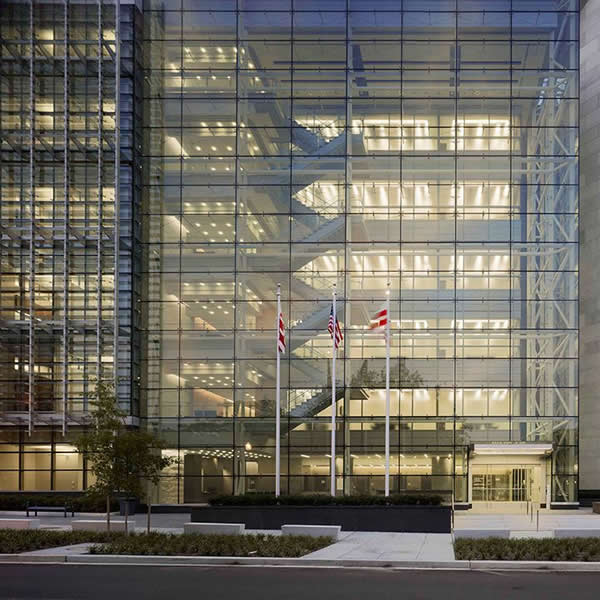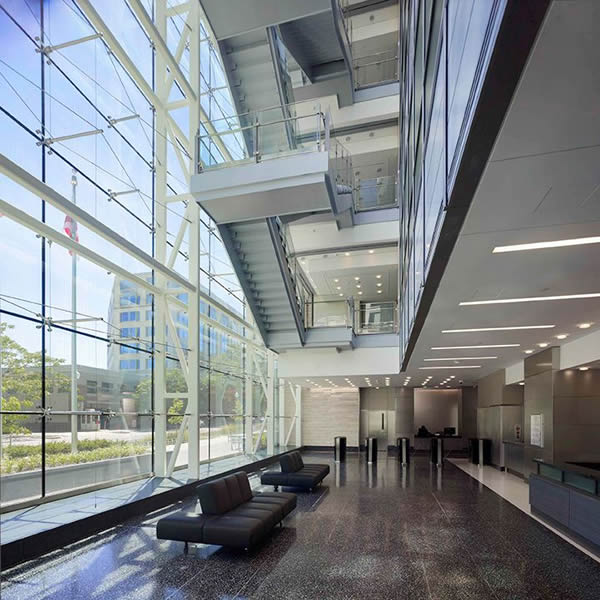
Looking more like a major consumer brand’s headquarters than a public facility, the Consolidated Forensic Laboratory (CFL) in the nation’s capital is a cutting-edge, award winning science facility designed to provide the District of Columbia with critical public safety and health science infrastructure.
Co-locating the Department of Forensic Sciences (DFS) and the Office of the Chief Medical Examiner (OCME), the CFL provides advanced laboratory and work facilities designed for the safety of the analysts and the public.

The $200 million facility is a state-of-the-art powerhouse, exactly like the work that is performed in the interior. There were many common (and not so common) logistical issues that crews faced to complete this building.
Facilities that have a site and program as complex as the Consolidated Forensic Laboratory require a lot of time and effort to evolve.
Since the build site is located in Washington, D.C., the site is in a dense urban area with strict zoning and anti-terrorism/force protection requirements. The CFL is adjacent to a major elevated interstate, elevated train line, and two underground subway lines.
While normally these type of federal buildings should not stick out in the crowd and draw attention to its presence, this building uses a modern design by HOK that is more functional than it might appear.
Nationally-acclaimed glass specialists from W&W Glass worked with installer TSI Exterior Wall Systems, Inc. to supply the six-story lobby atrium with glass roof returns and canopy over the entrance.

The team’s choice for the free-span structural glass lobby enclosure was a Pilkington Planar™ system with clear silk-screened insulating glass units utilizing HP 73/42 on the #2 Surface and a custom color white frit pattern on the #3 surface.
For the roof glass, the solution was clear SGP Interlayer insulating laminated silk-screened glass units with the same coating and pattern.
The hardware for the facade was a fairly complex configuration of Pilkington 902 fittings, Nexus-style spider castings, vertical stainless steel tension rods and horizontal stainless steel cable trusses. The result was an energy-efficient building “skin” that used coated glass to reduce heat load on the building.
The building also had chilled beam and heat recovery methods (like enthalpy wheels) to effectively and efficiently maintain temperatures. The CFL has recieved a LEED (Leadership in Energy and Environmental Design) Platinum rating, the highest designation.
The lofty atrium lets in a high volume of daylighting, thereby conserving energy that would be otherwise be needed for lighting this large space. A hanging staircase starts at the second floor to safely thwart any would-be assailants from gaining access to the upper parts of the building.

By separating the laboratory and office areas, the building responds to each section’s unique requirements. The labs on the north are compartmentalized while the offices on the south are open.
The core elements (shafts, electrical/telecom rooms, stairs, and elevators) are located centrally between the office and lab zone to serve both sides efficiently. The 351,000-square-foot lab required a very complex program including:
- A Biosafety Level 3 high containment lab
- General, isolated, and infectious autopsy suites
- Indoor firing range with ammunition storage, firearms reference library, and bullet recovery tank
- Drug laboratories and scanning Electron Microscope labs
Everything about this building is built with advanced technology that is still aesthetically pleasing. To get an even more personal viewpoint and see more of the building, check out the insider’s tour above from the DC Mayor’s Office YouTube with former CFL Director Mark Houck.
For a complete look at the W & W Glass portfolio of work that shows a tremendous range in projects, technology and cutting-edge design, visit our portfolio here.

